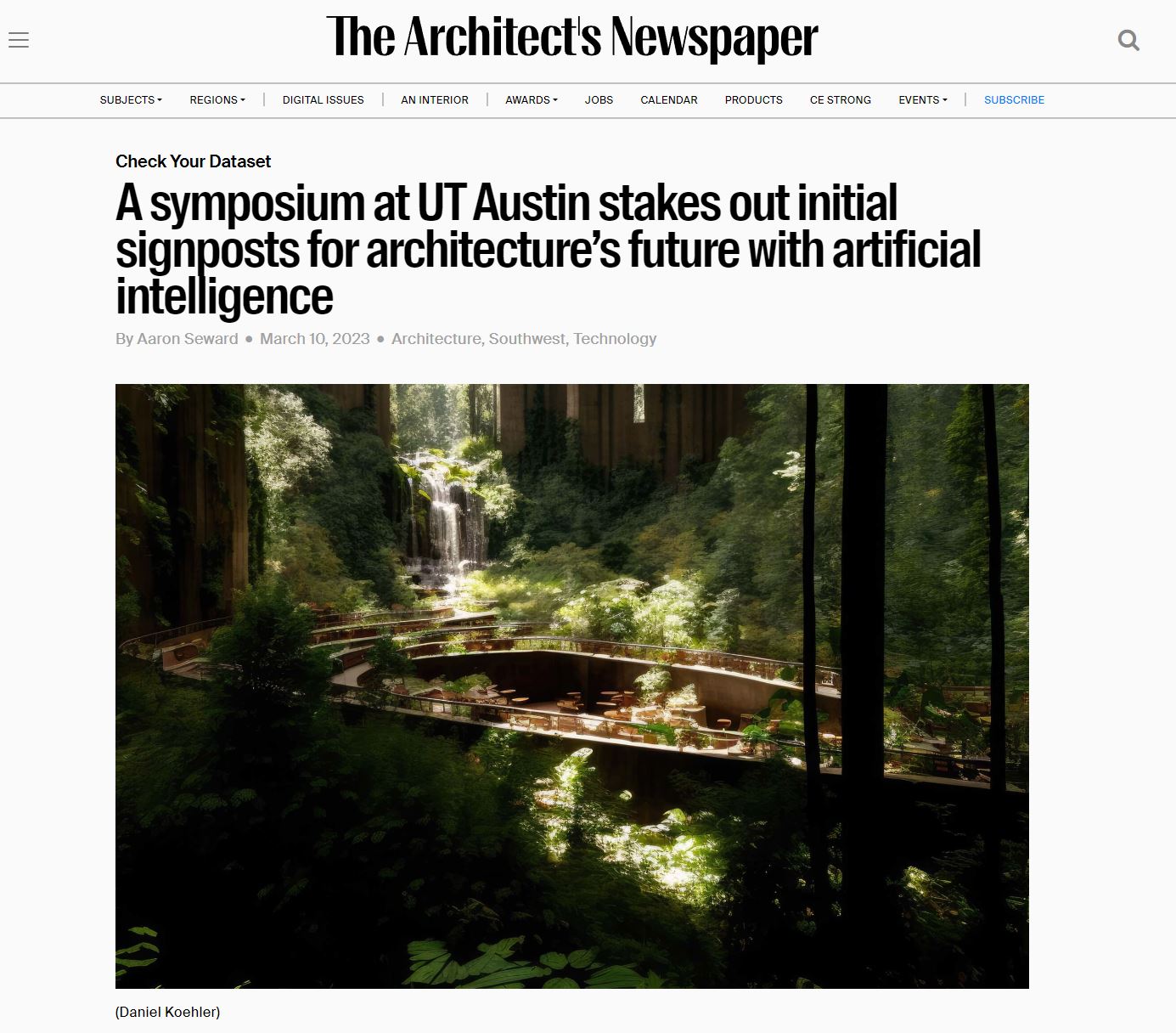Architecture After AI ∈ The Architect's Newspaper
Kyle Steinfeld
The "Architecture After AI" exhibition and symposium was reviewed in the March 10th edition of the Architect's Newspaper. The article by Aaron Seward is titled "A symposium at UT Austin stakes out initial signposts for architectureís future with artificial intelligence".

The relevant section from the article:
Kyle Steinfeld, associate professor of architecture at UC Berkeley, brought us back down to earth with a socio-technical history of text-to-image AI. The first bit of cloud he shewed away was the notion that the subject of the conference is artificial intelligence. True AI hasnít been invented yet, he said. The current generation of chatbots and text-to-image platforms can be more accurately described as generative statistics, or linear algebra. (If that makes it clearer for anyone, please email me). That said, Steinfeld does see some encouragement in these developments because they may lead technology to fulfill the promises of CAD, made since 1963, of actually being a good collaborative creative partner in design. The current generation of CAD tools force people into their ways of producing, whereas text-to-image offers the possibility that machine learning design tools will start to think more like human designers. AI research also got its start in the 1960s, but didnít really takeoff until the 2000s, when computing power approached the power needed and the world started producing and storing oceans of data. Deep machine-learning models of the sort that enable text-to-image platforms were developed at this time to deal with the problem of processing and storing all this data. These machine-learning architectures were then put into image generators by a community of amateur artists who experimented with the tools and bragged about their successes on Reddit. As for whether these AI platforms will wreck existing creative cultures, Steinfeld suggested computer visualization specialists might have to be worried because their craft has become accessible to anyone. Whatever disruption these technologies create in the job market, however, text-to-image AI undoubtedly renders architectural image making easy, fast, and therefore far less valuable than it has was the past.